- Home
- Simon Winchester
Pacific Page 5
Pacific Read online
Page 5
He didn’t have to. So far as the United States was concerned, the sixty-four-million-square-mile expanse of the Pacific Ocean was the only place big enough and empty enough, and American enough, to allow the testing of the thermonuclear weapons the president had now finally committed his country to create.
The ocean already had had a taste of what was to come. Since 1946 the U.S. government had been secretly testing simple atomic fission bombs in the blue lagoons of its tropics. But these were quite modest weapons—deadly and terrible, to be sure, but nothing compared with what was to come next. The decision Truman made on that third Thursday of January, as well as his formal order to the Atomic Energy Commission that followed, was to start a program of work on a very different kind of device, and of a type both of unimaginable deadliness and theoretically limitless destructive power. It was a bomb that would forever change the nature of warfare, and would forever change the world. And its potential power was such that it could now be tried out, displayed, and demonstrated only in the empty middle of the Pacific.
Until the mid-1940s the ocean had been, in the popular imagination, just as Ferdinand Magellan described it four hundred years earlier. It had seemed a truly pacific sea, a place of maritime languor and quiet, of warm ultramarine waters and gentle trade winds. It suffered its ferocious storms, true, and its island peoples had not always lived lives of placid serenity, but it had not been a battle-scarred sea of churning and salt-stained gray, as the Atlantic was known. Just recently the war between the United States and Japan had seen violence on a gargantuan scale. But what was about to happen now was quite different, and by many orders of magnitude.
When President Truman authorized the 1950 budget of three hundred million dollars for the AEC to begin work on these quite different weapons (the “supers,” as they were lightly called, the fusion bombs, the thermonuclear devices), they were little more than the blackboard musings of physicists’ dreams—but musings well worth bringing to the attention of the Oval Office.
It had been several weeks earlier, on October 6, 1949, that the director of Central Intelligence, Admiral Sidney Souers, told Truman about some physicists’ remarkable claims: that it might well be possible to employ the nuclear fusion of light gases to create explosions of tremendous force, unlike anything known before. Truman’s interest was instantly piqued—driven in part by his knowledge that the Russians had exploded their first crude atomic fission bomb just a few weeks earlier. This had led to bitter and ferocious argument in the United States, principally between the military and the scientific communities, over the morality of making a new kind of weapon that could and probably would have the power to obliterate not merely thousands but millions. Many of the leading figures in the Pentagon, well aware that the now nuclear-capable Soviets would soon also be able to construct such bombs, insisted that the United States develop them, either to keep up or to keep ahead. But many scientists, more aware than most of the terrible powers of the proposed weapons, found the idea of their development utterly abhorrent. Many were gripped with a profound sense of guilt, even shame, for having ever provided the theoretical basis for their construction in the first place. Fission bombs were bad enough; fusion bombs were unimaginable in their potential for horror.
However, and so far as the U.S. government was concerned, this particular debate was officially ended on January 19, when Truman summoned Admiral Souers to the White House to tell him, in person, of what would come to be seen as one of the truly momentous decisions of his presidency. Developing the new superbomb, Truman told him, finally “made a lot of sense . . . that was what we should do” (my emphasis).
On January 31 the president made the necessary formal pronouncement that he had commanded the AEC to begin the necessary research. Enough money had been made available in the budget. America had to have the bomb, he said to his cabinet colleagues, because although no one ever wanted to use it, its possession would offer a bargaining chip during future negotiations with the Soviets. That alone was the pitiless rationale that finally squared the circle, at least for President Truman, in the moral debate.
The AEC duly began its work, in secret, and with great speed. Within a year the musings had become material. The technical challenges of fashioning a thermonuclear bomb were essentially solved. A first, small prototype device, known as George, was exploded three months later, on May 8, 1951. Then, on November 1, 1952, the first true thermonuclear test weapon, known as Mike, was detonated. Then the largest of them all—a weapon that was tested despite a memorable miscalculation that triggered results both unforgivable and unforgiven—was detonated sixteen months after that.
And owing to their daunting size, all these thermonuclear devices were exploded in the middle of the once pacific Pacific Ocean.
So far as the ocean was concerned, the journey to this point began in 1946, on the mid-sea atoll that shares its name with the much-reduced new style of bathing costume introduced that same year. A costume that a disconcerted Le Monde editorial archly described as displaying “the extreme minimization of modesty” and, rather presciently, as “quite as shocking as an explosion.” The swimsuit’s creator, Louis Réard, had said much the same thing, though intending his remark to be more PR than pejorative: “Like the bomb, the bikini is small and devastating.”
As was the island story.
There was in the Pacific an Arcadian time, of course, when all its islands belonged, if belonged is the proper word, to those who had made their livings there for generations. But one by one, group by group, European discoverers happened upon these islands, and one by one, group by group, they lost their easy innocence. The islands that in due time would interest the American bomb testers were first spotted in the eighteenth century by an English seafarer named John Marshall: his fleet came across a vast scattering of atolls in an otherwise empty sea a thousand miles north of the great island of New Guinea. The island inhabitants—Micronesians, as they came to be called by anthropologists—were part Malay, part Polynesian. For thirty previous centuries, they had lived peaceably enough on the atolls that would soon be called the Marshall Islands. They had fished and gathered coconuts, and aside from occasional tussles and skirmishes among one another, they had seldom troubled anyone beyond.
But then came their “discovery,” and in turn a bewildering succession of outsiders who claimed to own and then to rule them, and the Elysian order of old was rudely and permanently interrupted.
As mentioned in the prologue, the Spaniards were the first to arrive, and though they ruled large tracts of the western Pacific from Manila in the Philippines from the sixteenth century onward, they considered the Marshalls too far away to be of much interest. Moreover, the Spaniards’ eventual loss of the Philippines to the United States in the Spanish-American War left their administration of these more distant islands well-nigh impossible—there were an estimated six thousand of them, and it was quite impractical to try to rule them from faraway Madrid.
A few American missionaries, who were busy converting the Hawaiians to Christianity, had stopped by the Marshalls earlier in the nineteenth century, en route to Japan. They left the islanders with a smattering of English, some vague awareness of biblical teachings, and the occasional use of the all-covering Christian version of the Muslim niqab, the Mother Hubbard dress—all influences that remain today. (The Marshalls are overwhelmingly Christian, and Protestant.) These missionaries were not acting as stalking horses for American colonists; that would come later. Instead, it was left to the then more adventurous and imperially inclined Germans, who arrived in the ocean in the later nineteenth century—stout Hamburg traders who discovered goods of one kind and another that could be sent back home to Germany.
Unlike the Spaniards, the Germans believed it was practical and commercially advantageous to try to rule here. They first set up commercial trading stations on the atolls, then established settlements, and finally, with the help of Lutheran missionaries, so entirely convinced the Marshallese that their future wo
uld be brighter under the kaiser’s rule that the islands became German colonies. A simple treaty, signed in 1899 with the Spanish and accompanied by a payment of twenty-five million pesetas, transferred ownership of all Spain’s Pacific islands from Madrid to Berlin.1 So, from 1906 onward, the islanders enjoyed an entirely new status. They were no longer overlooked outposts of Spain, but subjects of the Imperial German Pacific Protectorate; were ruled from a Papuan city named Herbertshöhe, fifteen hundred miles away to the southwest; had governors who sported names such as Rudiger, Hahl, and Skopnik; and were persuaded that to get on in life, they had to forget any Spanish they might have known, and learn German instead.
It would have been a somewhat wasted effort. Just eight years later, in 1914, and though few locally were aware of the Great War raging on the far side of the world, its effects became immediately apparent. Japanese warships suddenly appeared on the horizon, Japanese troops—who at the time were allied to the faraway British—marched ashore, and all the Germans were commanded to leave. They were replaced this time by administrators plucked from the ministries in Tokyo. Once the Germans had been properly vanquished in Europe in 1918, an official League of Nations mandate allowed Japan to run the islands entirely, making the Marshall Islanders “subjects of the Empire of Japan resident in the South Seas Mandate.” They were now to be ruled not from Papua, but from a new colonial headquarters in Saipan, fifteen hundred miles away to the northwest, and run by governors who sported names such as Tawara, Matsuda, and Hiyashi. The islanders were persuaded that to get on in life, they had to forget all their Spanish and German, and learn Japanese.
Then came the Second World War, and everything changed yet again. So far as the Marshall Islands were concerned, it did so most violently, during the last days of January 1944 and the Battle of Kwajalein, when a large force of American marines killed all but fifty-one of the thirty-five hundred Japanese in the garrison. That spring, governance of the Marshall Islands changed hands once more, with the puzzled locals accepting the rule of a third set of masters in forty years. They were now subjects of the faraway United States of America; were ruled in theory from Washington, DC; paid some kind of notional fealty to President Roosevelt (and soon to Truman); and were advised that to get on in the world, they had best forget all the Spanish and German and Japanese they might have remembered, and learn how to speak English.
They might have supposed that this was to be the final chapter. In fact, it was only the beginning. A new nightmare was about to unfold.
At the end of the war—though the Soviet Union was well on the way—the United States was the only nation to possess atomic weapons, and it had exploded three of them. All had exploited the physics of the fissioning of heavy metals. The first had been a test weapon in the New Mexico desert; the second and third were the live weapons dropped on Hiroshima and Nagasaki. Given the utter devastation of the two bombs that had been dropped in anger, and how quickly they helped end Japan’s war-fighting abilities, President Truman had no doubts: these new devices, terrible though they might be, should now become a core element in America’s arsenal. He instructed his Pentagon chiefs to make more of them, to test them, to perfect them, and to create ever better and more lethal versions—and so make quite certain that in matters atomic, the United States retained an absolute military lead over the rest of the world.
It was first decided that the U.S. Navy (and not the army) should be in charge of the tests. The rationale had all to do with the likely metrics of destruction. The success of the early atom bombs, even though their targets were cities, had quite spooked American admirals into suddenly believing that of all the main instruments of war, the surface ship at sea might be the most vulnerable to atomic destruction. Soldiers might perhaps hide in deep cement bunkers; aircraft might be swiftly flown out of harm’s way; but a surface ship (especially an enormous lumbering vessel such as an aircraft carrier) was entirely vulnerable to nuclear attack, and could possibly be sunk by a single bomb, and within minutes. It could neither run nor hide from a bomber coming at it with a weapon of such power. Consequently, the future of the American navy—of navies in general, in fact—might be at stake: for if an atomic weapon could sink all ships with such ease, then the capital ship itself would soon be an obsolete entity, no better than a knight in armor on an iron-plated charger.
If, however, was key. No one knew if an atom bomb could actually sink an enormous naval vessel. It looked quite likely. But no one could be certain. So one of the guiding principles behind the early test program that President Truman now demanded was the need to elicit the truth. Could an atom bomb destroy a major capital ship: a battleship, an aircraft carrier, a heavy cruiser? The navy feared that its assets were the most vulnerable target; so the navy should conduct the tests.
The mechanics of the Manhattan Project, the secret wartime plan to make the first atom bombs, had left behind a well-oiled production line. As during the war, plutonium for the postwar tests would come from the giant plant at Hanford, in Washington State; the enriched uranium would come from the immense centrifuge farms in Oak Ridge, Tennessee; and the design and final assembly of the gadgets, as they were initially termed, would continue at the laboratory in Los Alamos, in New Mexico. But where best to test them? The White House charged a vice admiral named William Blandy with finding the best place “to permit the accomplishment of the tests with acceptable risk and minimum hazard.”
Wherever the bombs were to be tested had, first, to be in territory that was firmly under American control. Since one of the main concerns at the Pentagon was the effect such weapons would have on large warships, it seemed prudent to carry out the test in a sheltered lagoon in which test vessels could be anchored as targets and blasted with bombs. The chosen place should also have a very limited local population—as Admiral Blandy remarked, “[I]t was important that the local population be small and cooperative so they could be moved to a new location with a minimum of trouble.”
Weather had to be reliable—most especially the winds, which had to be predictable at a range of altitudes up to a dozen miles, the height of the mushroom cloud’s pillar, since any sustained movements of air would determine where plumes of radiation from the pillars might end up. There was the question of remoteness: ideally it should be far away from shipping lanes and from the inquisitive, and yet not too remote, since it had to be within range of an airfield that could house the bombers that would carry any air-dropped weapons to be tested. The favored heavy bomber of the time was the B-29 Superfortress, with an average range of 3,700 miles. The perfect test site could thus be no more than half that number of miles from an airfield, to allow a journey out and back: 1,000 miles distant from the field seemed ideal.
The search for such a place began in October; the choice had become clear by January. After the Pentagon discounted a number of remote spots in the Atlantic Ocean and in the Caribbean Sea, the idea became more and more compelling to create a test site somewhere in the seemingly limitless expanses of the Pacific Ocean. There was brief but serious consideration of the biologically abundant Galápagos Islands—a move that, even in those relatively unsophisticated times, would have raised environmentalists’ eyebrows. In the end it was the Marshall Islands (which had lately become de facto American territory) that seemed best suited.
The Marshalls were close to the ocean’s midpoint, far removed from sightseers. There was a large airfield at Kwajalein, ideal for B-29 operations. And while almost any of the twenty-nine atolls and five islands that make up the Marshalls might fit the bill, one group of islands above all others looked ideal. Two hundred fifty-six miles north of Kwajalein, at the northern end of the so-called Ralik Chain—the “Sunset Chain,” the western chain—of islands, there was Bikini.
It was the chosen site for the enactment of a sorry irony. For once the Pacific war was fully over—once the unbearable sounds of battle, and the landing craft and the tanks and the gun emplacements and trenches, had gone away; and once all these things had been replac
ed by a half-forgotten quietude called peace, and there were lapping blue waters once again, and multicolored fish and white sands and green parrots and thermal-dancing frigate birds and coral reefs and ranks of palm trees leaning into the endless trade winds; once all such things had reestablished themselves as the hallmarks of the South Seas; and once they had particularly done so on tiny, pretty, peaceful, caricaturedly Pacific Bikini—Admiral Blandy and his team devised a plan to end all this, and turn Bikini and all her islands and their lagoon once again into a hellish gyre of ruin and mayhem.
The ruin of this near-perfect paradise was quite deliberate, and it was achieved because the number of Marshallese was vanishingly small, while America, the victor in the recent conflict, was a huge and very visible nation of almost limitless power.
In 1946 only 167 Marshallese men, women, and children were living on the handful of habitable islands strung around Bikini’s substantial shark-filled lagoon. Like all Marshallese communities, they had a local leader, a chief, an iroij, named Juda Kessibuki. But neither the islanders nor their paramount chief had much chance of avoiding the near-total destruction of their homeland, because they were pitted against the will and recommendation of Admiral Blandy, a New Yorker whose prominent beak had earned him the nickname Spike2 and whose influence in the Pentagon and the White House was seemingly limitless. His motto was Pax per Potestatem, “Peace Through Power”—and this was essentially how he persuaded the Bikinians to leave their island and let the Americans ruin it forever.
Admiral Blandy had made his formal choice of Bikini in mid-January 1946. It was promptly approved; and on February 10, Ben Wyatt, the middle-aged U.S. Navy commodore who had been appointed military governor of the Marshalls, flew out to the atoll on a seaplane to deliver the news to the 167 islanders. They should meet him on a Sunday, he said. After church. He was going to use “gentle words” to tell them.

 The Surgeon of Crowthorne
The Surgeon of Crowthorne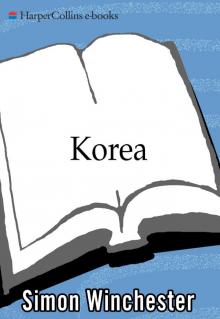 Korea: A Walk Through the Land of Miracles
Korea: A Walk Through the Land of Miracles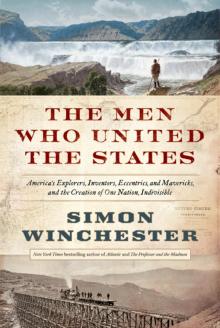 The Men Who United the States: America's Explorers
The Men Who United the States: America's Explorers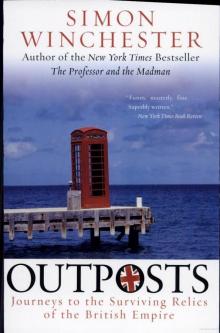 Outposts: Journeys to the Surviving Relics of the British Empire
Outposts: Journeys to the Surviving Relics of the British Empire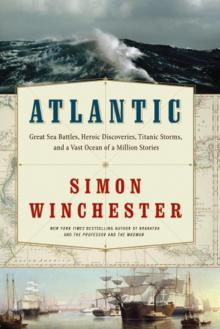 Atlantic: Great Sea Battles, Heroic Discoveries, Titanic Storms
Atlantic: Great Sea Battles, Heroic Discoveries, Titanic Storms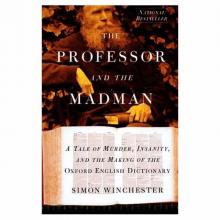 The Professor and the Madman: A Tale of Murder, Insanity
The Professor and the Madman: A Tale of Murder, Insanity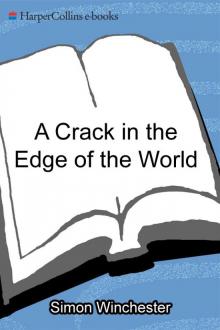 A Crack in the Edge of the World
A Crack in the Edge of the World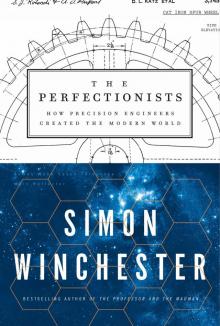 The Perfectionists: How Precision Engineers Created the Modern World
The Perfectionists: How Precision Engineers Created the Modern World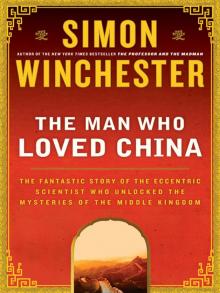 The Man Who Loved China: The Fantastic Story of the Eccentric Scientist
The Man Who Loved China: The Fantastic Story of the Eccentric Scientist The River at the Center of the World: A Journey Up the Yangtze
The River at the Center of the World: A Journey Up the Yangtze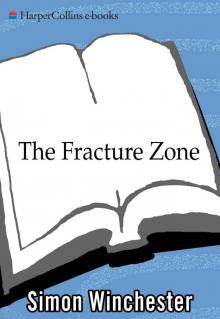 The Fracture Zone: My Return to the Balkans
The Fracture Zone: My Return to the Balkans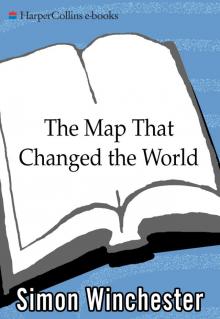 The Map That Changed the World
The Map That Changed the World Krakatoa: The Day the World Exploded
Krakatoa: The Day the World Exploded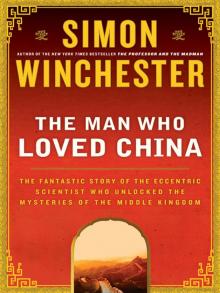 The Man Who Loved China
The Man Who Loved China The River at the Centre of the World
The River at the Centre of the World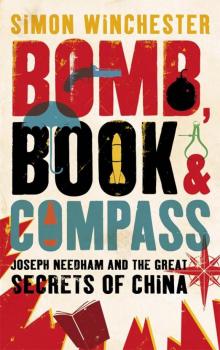 Bomb, Book and Compass
Bomb, Book and Compass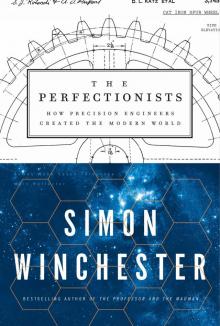 The Perfectionists
The Perfectionists The Meaning of Everything
The Meaning of Everything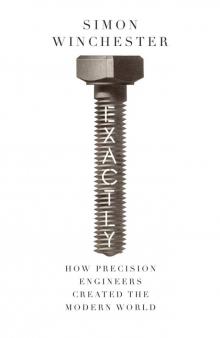 Exactly
Exactly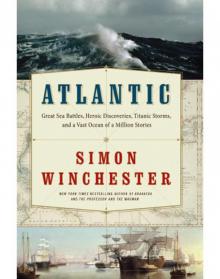 Atlantic
Atlantic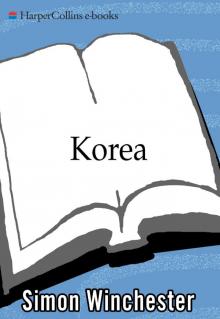 Korea
Korea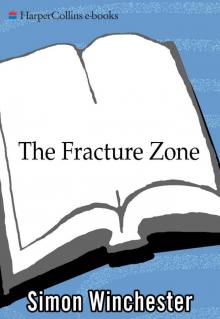 The Fracture Zone
The Fracture Zone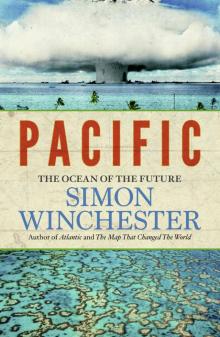 Pacific
Pacific Krakatoa
Krakatoa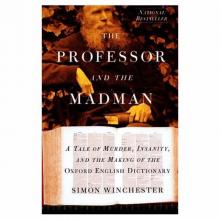 The Professor and the Madman
The Professor and the Madman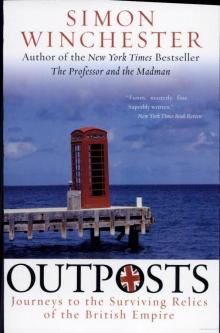 Outposts
Outposts